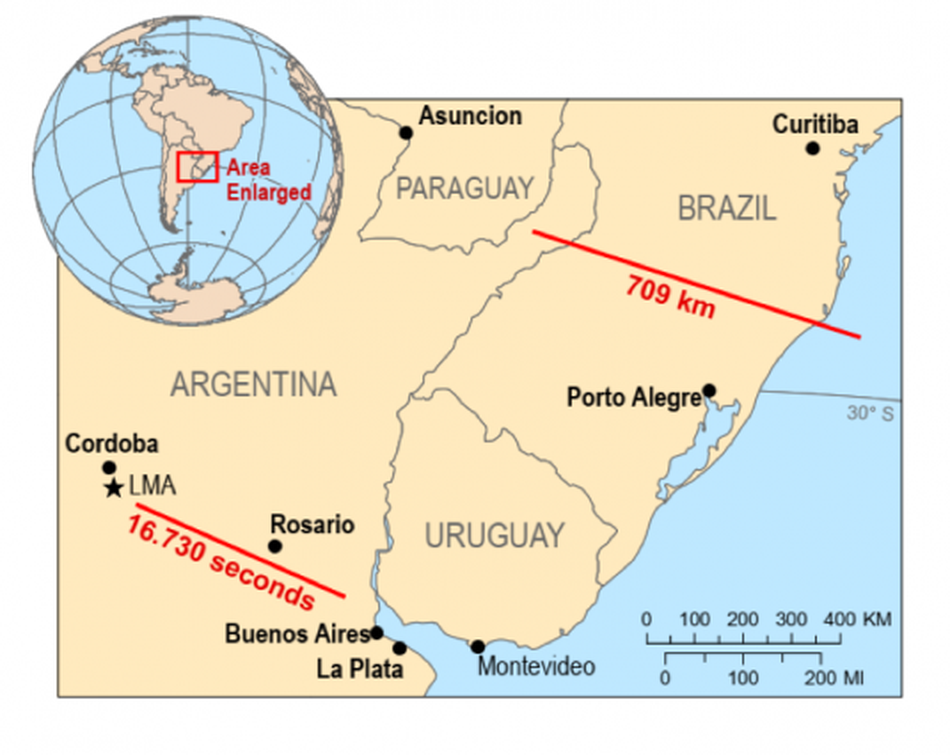On Halloween in 2018, a colossal lightning flash streaked across the Brazilian sky.
A National Oceanic and Atmospheric Administration (NOAA) satellite captured the “megaflash,” and the World Meteorological Organization (WMO) announced Wednesday that this mighty bolt stretched some 440.6 miles (give or take five miles) across the sky. This is about the distance between Washington, D.C. and Boston.
The WMO also certified the greatest duration for a flash, at 16.73 seconds. That extreme event happened last year over Argentina.
“These are extraordinary records from single lightning flash events,” Randall Cerveny, the chief rapporteur of weather and climate extremes for the WMO, said in a statement. “Environmental extremes are living measurements of what nature is capable, as well as scientific progress in being able to make such assessments. It is likely that even greater extremes still exist, and that we will be able to observe them as lightning detection technology improves.”

Rendering of the length of the record-setting bolt.
Image: wmo

Satellite image of the longest bolt on record.
Image: wmo
The new lightning record smashed the previous record-holder, a 2007 bolt in Oklahoma measured at some 199.5 miles in length.
That such giant megaflashes exist underscores the “30-30” rule, as bolts can generally travel long distances: “If [the] time between flash and thunder is less than 30 seconds, go inside!” wrote the WMO. “And wait 30 minutes after the last observed flash to resume outdoor activities.”
Today’s ever-advancing satellite technology, like lightning mappers aboard NOAA’s GOES-16 satellite, allow researchers to spot unparalleled extremes in weather. There are likely bigger flashes out there, waiting to happen.
